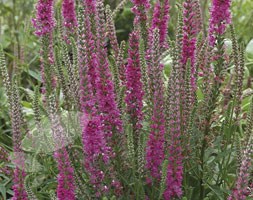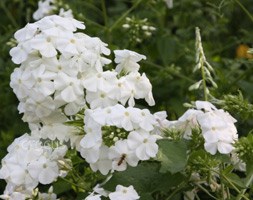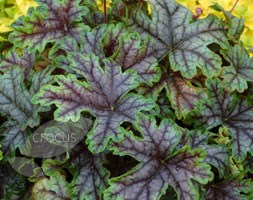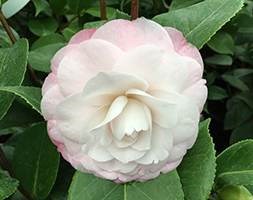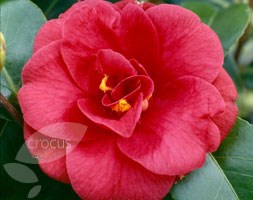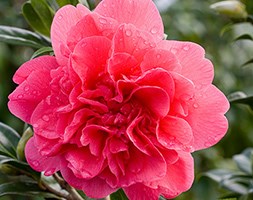Price reductions at Crocus
by Sarah - March 2nd, 2014.Filed under: Crocus, Price Reductions.
Reduced price on items today at Crocus
Hyacinthus orientalis ‘Jan Bos’ (garden hyacinth bulbs) was £5.99 now £4.99
Position: full sun or partial shade Soil: any well-drained, moderately fertile soil (for container-grown bulbs use two parts John Innes No2 compost to one part sharp grit) Rate of growth: average Flowering period: April and May Flower colour: red Other features: all parts of the plant may cause a mild stomach upset if ingested; contact with the bulbs may cause skin irritation Hardiness: fully hardy Garden care: Using gloves plant bulbs 10-15cm (4-6in) deep and 15cm (6in) apart in early or mid-autumn.
Veronica spicata ‘Rotfuchs’ (speedwell (syn Red Fox )) was £8.99 now £5.99
Position: full sun or partial shade Soil: moderately fertile, moist, well-drained soil Rate of growth: average Flowering period: June to August Flower colour: deep pink Hardiness: fully hardy Dense, slender spires of deep pink flowers from early to late summer above toothed, fresh green leaves. This marvellous, deep pink speedwell is guaranteed to create an impact at the front of a mixed or herbaceous border. To thrive it requires a well-drained soil as plants that become water logged over winter are unlikely to survive. Garden care: Remove faded flower-stems in autumn. Apply a generous 5-7cm mulch of well-rotted garden compost or manure around the base of the plant in spring
Phlox paniculata ‘David’ (border phlox) was £6.99 now £5.99
Position: full sun or partial shade Soil: fertile, moist soil Rate of growth: average Flowering period: July to November Hardiness: fully hardy Phlox have always been country garden favourites for their delicious scent and attraction to butterflies and bees. This new variety has gorgeous trusses of hydrangea-like, pure white flowers which appear from July to November above dark green leaves. It is a showy perennial that forms a natural mound and looks wonderful planted near patios or paths where the scent of the flowers can be fully appreciated. It will tolerate full sun or partial shade, but like all phlox, does not like soil that dries out in summer. This vigorous variety has good resistance to powdery mildew too. Garden care: Support with bamboo canes, brushwood or ring stakes before the flowers appear. Phlox are greedy plants, so apply a mulch 5-7cm (2-3 in) deep of well-rotted garden compost or manure in early spring. Shear off the spent flowers to prevent reseeding. If the leaves show signs of powdery mildew , cut down to the ground and dispose of the affected foliage, but do not compost it. Clear away the debris around the plant to reduce the chances of reinfection. Cut down to the ground in autumn. Lift and divide large clumps in autumn or spring.
x Heucherella ‘Tapestry’ (PBR) (coral bells) was £7.99 now £6.99
Position: partial shade Soil: fertile, moist or well-drained soil Rate of growth: average Flowering period: June to August Hardiness: fully hardy Each attractively lobed leaf has network of deep purple-black veins, from which the colour radiates out, becoming more intense in autum and winter. The sprays of pink flowers, which are held on upright stems above the foliage, appear in profusion from early summer, creating a frothy haze of colour. In cold winters the plant will lose most (if not all) of its foliage, however in milder conditions it will remain interesting throughout the year. Garden care: Remove tatty foliage in autumn. Lift and divide clumps every couple of years in early autumn and replant with the crown just above the surface of the soil. Apply a generous 5-7 cm (2-3 in) mulch of well-rotted organic matter around the crown of the plant in spring.
Gillenia trifoliata (Bowman’s root) was £9.99 now £8.99
A pretty perennial that bears masses of irregularly star-shaped white flowers from late spring to late summer. In autumn the foliage turns fiery red and the winter seedheads are a bonus too. Ideal for growing as a cut flower. Position: partial shade Soil: fertile, well-drained soil, neutral to slightly acidic soil Rate of growth: average Flowering period: May to August Flower colour: white Hardiness: fully hardy Garden care: Divide congested plants in spring or autumn. Protect young shoots from slug attack
Camellia japonica ‘Desire’ (camellia) was £19.99 now £14.99
Position: partial shade (but not east-facing) Soil: moist but well-drained, humus-rich, acid soil (or ericaceous compost for container-grown specimens) Rate of growth: average Flowering period: January to March Hardiness: fully hardy The formal, semi-double flowers of this gorgeous variety are mainly a pale blush pink or white, but each petal has a darker pink edge, which gives them a distinctive bi-coloured effect. They look very pretty when in flower in late winter and early spring and they make a striking focal point in a seasonal planting scheme. Their glossy evergreen foliage also makes them a valuable garden shrub, which will provide structure and interest throughout the year. Alternatively find a large pot and fill it with ericaceous compost and you will have a super specimen for the patio. Garden care: To prevent damage to the emerg ing buds and flowers protect from cold, dry winds and early morning sun. Water e stablished plants in dry weather to prevent bud drop. Apply a balanced liquid fe rtiliser in mid-spring and again in June. Top-dress annually with shredded bark or well-rotted leaf mould. After flowering lightly trim or prune any branches th at spoil the appearance of the plant.
Camellia japonica ‘Adolphe Audusson’ (camellia) was £19.99 now £14.99
Position: partial shade (but not east-facing) Soil: moist but well-drained, humus-rich, acid soil (or ericaceous compost for container-grown specimens) Rate of growth: average Flowering period: March to May Hardiness: fully hardy A lovely camellia with large, semi-double, blood-red flowers offset by deep green, glossy leaves and compact, upright growth. This is arguably the best red camellia, with masses of flowers for many weeks. It’s ideal for a mixed or spring border and the foliage provides an excellent foil for spring bulbs. Garden care: To prevent damage to the emerging buds and flowers protect from cold, dry winds and early morning sun. Water established plants in dry weather to prevent bud drop. Apply a balanced liquid fertiliser in mid-spring and again in June. Top-dress annually with shredded bark or well-rotted leaf mould. After flowering lightly trim or prune any branches that spoil the appearance of the plant.
Camellia x williamsii ‘Anticipation’ (camellia) was £19.99 now £14.99
Position: partial shade (but not east-facing) Soil: moist but well-drained, humus-rich, acid soil (or ericaceous compost for container-grown specimens) Rate of growth: fast-growing Flowering period: February and March Hardiness: fully hardy An extremely hardy camellia that produces large, ruffled, peony-form, crimson flowers in late winter and early spring. This handsome, evergreen shrub has glossy, bright green leaves, and is one of the most popular and easy-to-grow forms of camellia. Narrowly upright in habit, it’s ideal for use in a large pation container or for creating an informal, flowering screen. Garden care: To prevent damage to the emerging buds and flowers protect from cold, dry winds and early morning sun. Water established plants in dry weather to prevent bud drop. Apply a balanced liquid fertiliser in mid-spring and again in June. Top-dress annually with shredded bark or well-rotted leaf mould. After flowering lightly trim or prune any branches that spoil the appearance of the plant.








